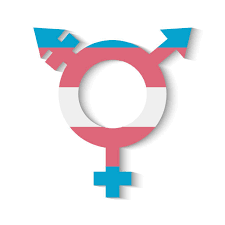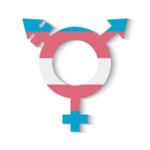Understanding the estrogen menstrual cycle is crucial for anyone who experiences it. Estrogen is one of the primary hormones that regulates various physiological processes in the female body, particularly those tied to reproduction. This article will delve into the essentials of the estrogen menstrual cycle, exploring its roles, phases, and the common symptoms associated with its fluctuations. Whether you’re looking to better understand your body or seeking to manage discomfort, this guide has got you covered!
What Is the Estrogen Menstrual Cycle Anyway?
The estrogen menstrual cycle refers to the monthly hormonal changes that a person with a uterus experiences, mainly driven by fluctuations in estrogen levels. This cycle is typically about 28 days long, although it can vary from person to person. The cycle is divided into several phases, each characterized by different hormonal changes and physiological responses in the body, particularly affecting the ovaries and the uterus.What Does Trans Bottom Surgery Look Like
Understanding the estrogen menstrual cycle can significantly impact your awareness of your body and its needs. By recognizing the phases of your cycle, you can better anticipate changes in mood, energy levels, and even physical health. It’s not just about the flow of menstruation; it’s a dynamic process that shapes many aspects of your well-being.
The Role of Estrogen in Your Monthly Cycle
Estrogen is often referred to as the female hormone, but it plays a complex role in the menstrual cycle. Produced mainly by the ovaries, estrogen is responsible for the development of the egg, thickening of the uterine lining, and preparation for potential pregnancy. As the cycle progresses, estrogen levels rise and fall, influencing various bodily functions, including metabolism and bone density.
In addition to its reproductive functions, estrogen affects other systems in the body. For instance, it plays a crucial role in maintaining skin elasticity, regulating mood, and even influencing cognitive function. So, while it fundamentally drives the reproductive aspects of the menstrual cycle, its effects are far-reaching and essential for overall health.
Phases of the Cycle: When Estrogen Takes the Lead
The menstrual cycle is typically divided into four distinct phases: the menstrual phase, the follicular phase, ovulation, and the luteal phase. During the menstrual phase, estrogen levels are at their lowest, leading to the shedding of the uterine lining. As the cycle progresses into the follicular phase, estrogen begins to rise, stimulating the growth of follicles in the ovaries.
Ovulation marks a peak in estrogen production, prompting the release of a mature egg. Following ovulation, in the luteal phase, estrogen and progesterone work together to prepare the uterus for potential implantation. If pregnancy does not occur, estrogen levels will dip again, leading to the start of a new cycle. Understanding these phases can help you tune in to your body’s rhythms and better manage your menstrual health.
How Estrogen Affects Your Mood Throughout the Month
Estrogen has a profound impact on mood and emotional well-being. During the first half of the cycle, when estrogen levels rise, many individuals report feeling more energetic, positive, and emotionally stable. This is often attributed to the hormone’s ability to enhance serotonin production, the "feel-good" neurotransmitter in the brain.
However, as the cycle progresses into the luteal phase and estrogen levels decline, some individuals may experience mood swings, irritability, or even symptoms of premenstrual syndrome (PMS). It’s a good reminder that hormonal fluctuations play a significant role in emotional health, and being mindful of these changes can help you navigate them more effectively.
Understanding Estrogen Levels: Peaks and Valleys
Estrogen levels are not static; they fluctuate throughout the menstrual cycle. Typically, levels rise during the follicular phase, peaking just before ovulation. This peak is crucial for triggering ovulation, after which levels begin to decline during the luteal phase. These hormonal peaks and valleys can lead not only to physical changes but also emotional and psychological shifts.
Monitoring these estrogen levels can be beneficial for understanding your body better. Many people use ovulation tracking apps or fertility awareness methods to keep tabs on their cycle and recognize patterns. By doing so, you can gain insights into when you might feel your best and when you might need to practice more self-care.
Common Symptoms Related to Estrogen Fluctuations
As estrogen levels fluctuate, many individuals experience a range of symptoms. Common physical symptoms include breast tenderness, bloating, and changes in libido. Emotional symptoms can range from heightened anxiety to increased irritability. Understanding these symptoms can help you anticipate how your body may react during different phases of your cycle.
Moreover, some individuals may experience more severe effects, like mood disorders or painful periods, particularly if they have existing hormonal imbalances. Recognizing these symptoms as part of the normal cycle can help reduce anxiety and empower you to take charge of your health.
Tips to Manage Estrogen-Related Discomforts
Managing discomfort related to estrogen fluctuations can involve lifestyle adjustments, dietary changes, and even mindfulness practices. Regular exercise can help balance hormones and alleviate symptoms like bloating and mood swings. Additionally, incorporating foods rich in omega-3 fatty acids, such as flaxseeds and fatty fish, can promote hormonal balance.
Mindfulness and stress-reduction techniques like yoga and meditation can also be invaluable. They help in managing emotional fluctuations and creating a sense of calm during the more challenging phases of the cycle. Experimenting with different strategies can lead to a personalized approach that works best for you.
When to Seek Help: Estrogen and Your Health Concerns
While fluctuations in estrogen are a normal part of the menstrual cycle, there are times when it may be wise to seek professional help. If you experience significant mood swings, severe pain, or irregular periods, it could indicate underlying hormonal imbalances or other health issues. Consulting with a healthcare provider can help you assess your symptoms and develop a management plan tailored to your needs.
Additionally, if you find that your emotional health is significantly impacted or if your discomfort is affecting your daily life, don’t hesitate to reach out for support. Hormonal health is complex, and there’s no one-size-fits-all solution; a professional can help guide you on your path to better health.
Understanding the estrogen menstrual cycle can empower you to take control of your health and well-being. By recognizing the role of estrogen and how it influences various aspects of your life, you can better navigate the ups and downs of your monthly cycle. Remember, it’s all about listening to your body and seeking support when you need it! Whether you’re looking for ways to manage discomfort or simply want to educate yourself on this natural process, knowledge is a powerful tool.


